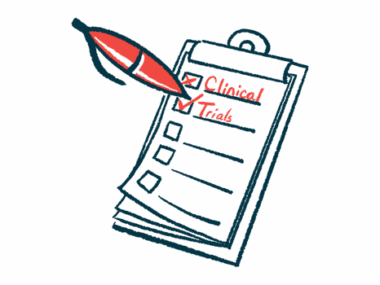Princess and the Pee, Part 2: Toileting Independence
Written by |

Part two of a series. Read part one here.
Have you ever gone to bed, got comfy, finally relaxed, and then realized you needed the bathroom? During inconvenient times, I’ve often wished that someone could “go” for me. No doubt, Jess feels the same way.
One of our favorite children’s books was “The Princess and the Potty.” I read it over and over to Jess. We bought pretty panties and talked about how she was now a big girl. As much as I would like to say she was toilet trained during the day, we kept her to a schedule. Our routine was to use the bathroom upon waking, before lunch, returning home from school, and before bed. We also added an extra potty-stop before leaving the house on long car drives. I’m not sure who was the one that was trained, however, sticking to a routine helped keep her bladder healthy.
Our urologist had shared how important it was to drink plenty of fluids during the day. For some reason, people think you won’t have to go as much if you don’t drink too much. The opposite is true. By filling the bladder, you are training it to manage a larger capacity. This is important if you want to make it through the night.
The doctor also advised that we need to void and void again to empty the bladder completely. We made sure of this at home, but I don’t know if the school was as mindful.
Turns out, my daughter is a camel. She can hold her bladder all day. I’d get reports saying “she didn’t have to go” but the truth was, she didn’t want to. Not only is this unhealthy, but it’s distracting.
Jess was content and continent during the day. At night, she was not. She learned she could either take her panties off or just move over from the soiled sheets. Over the years, my efforts to get her through the night were unsuccessful. Not knowing better, I had Jess wear a pull-up at night.
The problem with pull-ups is that they aren’t uncomfortable. They are meant to be an aid. Wearing a pull-up at night prevented the mess, but it wasn’t teaching Jess to use the bathroom at night. If Jess could toilet herself during the day, then she had the ability to be independent at night. However, she needed to retrain her body. We were going to need the big guns to convince Jess that this was important.
Years earlier, we tried an alarm system, but it stopped working if it got wet. Obviously, it didn’t work. However, when Jess was about to turn 20, we found the Rodger system and prayers were answered.
They say that boot camp is hell, and that is how I would describe our first week using the alarm. Literally and figuratively, it pissed her off.
We were advised to purchase several panties. A wireless transmitter attaches to the panties. One drop of pee and the alarm will blare. When Jess went to bed and drifted off to sleep, she’d relax, her bladder would release, and the alarm would sound. This was when we realized that she wasn’t emptying her bladder completely during the day.
When the alarm went off, we hustled her to the bathroom where she would void. Then we put on a new, dry pair of panties. One night, she went through four pairs of panties within 20 minutes. Every time the alarm went off, she got more “pissed off,” and we all felt sleep deprived.
By the end of the week, my headstrong daughter lost the fight. Because she didn’t want to hear that annoying alarm, it forced her to void properly. Once she realized the reward was a good night’s sleep, we were all on our way toward peaceful slumber. After a month, she had retrained her bladder. This was the greatest Christmas gift this mother could have received. Little did we know that technology would be the answer to more of our problems.
To read more about our journey, visit my blog. (We wouldn’t even have a story if Jess hadn’t found her AAC voice.) Also, check Angelman Syndrome News on Fridays for my upcoming columns.
***
Note: Angelman Syndrome News is strictly a news and information website about the disease. It does not provide medical advice, diagnosis, or treatment. This content is not intended to be a substitute for professional medical advice, diagnosis, or treatment. Always seek the advice of your physician or other qualified health provider with any questions you may have regarding a medical condition. Never disregard professional medical advice or delay in seeking it because of something you have read on this website. The opinions expressed in this column are not those of Angelman Syndrome News, or its parent company, Bionews Services, and are intended to spark discussion about issues pertaining to Angelman syndrome.






Leave a comment
Fill in the required fields to post. Your email address will not be published.